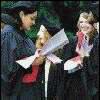 |
|
"Genesis" -- One of the Biggest Computers in Ontario -- Revs Up Research Capacity, Helps Train the Next Generation of Researchers At York U.'s Faculty of Pure & Applied Science -- Thanks to Sgi Co-Investment
FPAS Dean Robert Prince said the new machine, a 16-node parallel processing Origin2000 high performance computer dubbed "Genesis", is drawing a lot of attention and demand from the more than 30 principal users across the university who have been waiting for years for this kind of technological tool. They and their students are eager to augment the sophistication of their projects and launch new projects, he said.
Earlier this year, the Faculty of Pure and Applied Science inked a development deal with SGI, which pioneered the development and delivery of shared-memory parallel processing systems like the Origin computer. Under the co-investment arrangement, York provided about $500,000 and SGI contributed about $889,000, some of that in cash and some in services.
Computer Science Professor and FPAS Associate Dean Eshrat Arjomandi headed up the group that worked diligently for several years drumming up support for the project after an Ontario high-performance computing centre, based at U of T, was dismantled in 1992, leaving many York faculty high and dry. "Many researchers were left as orphans and they had to abandon projects in mid-stream, unless they had the money to pay U.S. centres," Arjomandi said. "Every university that is research intensive needs to have some high-performance computing facility, and we are grateful to SGI for its contribution to our endeavour to produce top-notch science students to advance the next generation of knowledge."
Genesis was installed early in 1999 and researchers began taking courses in how to use their new-found computing power. For instance, researchers in the chemistry department will use the new power of Genesis to calculate the energy of interaction between ligands and metal ions. Others will use Genesis to study clusters of atoms and their reactions to laser light. Physicists will use the machine to study the interactions between spacecraft and space plasma, while astronomers will be able to create dynamic simulations of motions both within and outside the solar system. At the Centre for Vision Research, scientists are looking forward to using the machine to develop neural network models to simulate vision and visual motor-control.
"The advantage of the new machine is power, pure and simple," said Arjomandi. "Nowadays, scientists have jobs that run for days; this allows them to get their results faster. It's a parallel machine, so you can use all 16 processors simultaneously to run a single job." She added that the enormous memory and storage capacity -- eight gigabytes of memory and 91 gigabytes of storage capacity -- are also important, especially with databases from such subjects as combinatorial chemistry and genetics becoming ever larger.
Dean Prince said highly skilled personnel in the information technology sector is in demand and this machine will provide a great opportunity for the training of graduate students. The machine will also be used to train senior computer science students on high-performance platforms. This is the first time that such a machine has become available to senior computer science students, he added.
York University has more than 3,000 undergraduate students enrolled in the Faculty of Pure and Applied Science and almost 300 graduate students. Nearly 60 per cent of York's incoming Ontario Academic Credit (OAC) science students have an average of more than 80 per cent. York's faculty members have consistently ranked second in the country with respect to Natural Sciences and Engineering Research Council of Canada/Medical Research Council (NSERC/MRC) grants per eligible full-time faculty member.
WHO:
WHAT:
WHEN:
WHERE:
For more information, please call:
Sine MacKinnon
Laurie Vagenas |
|
|
| | Welcome to York University | Latest Release | Release Archives | |
![[to York's Home Page]](../../images/yorklogos.gif)
